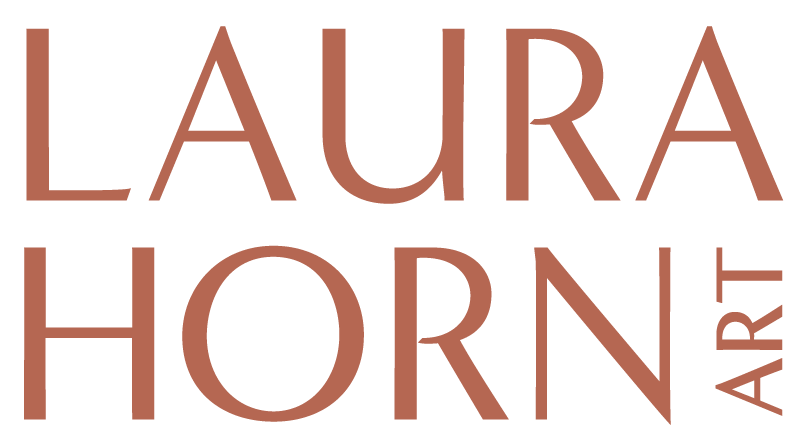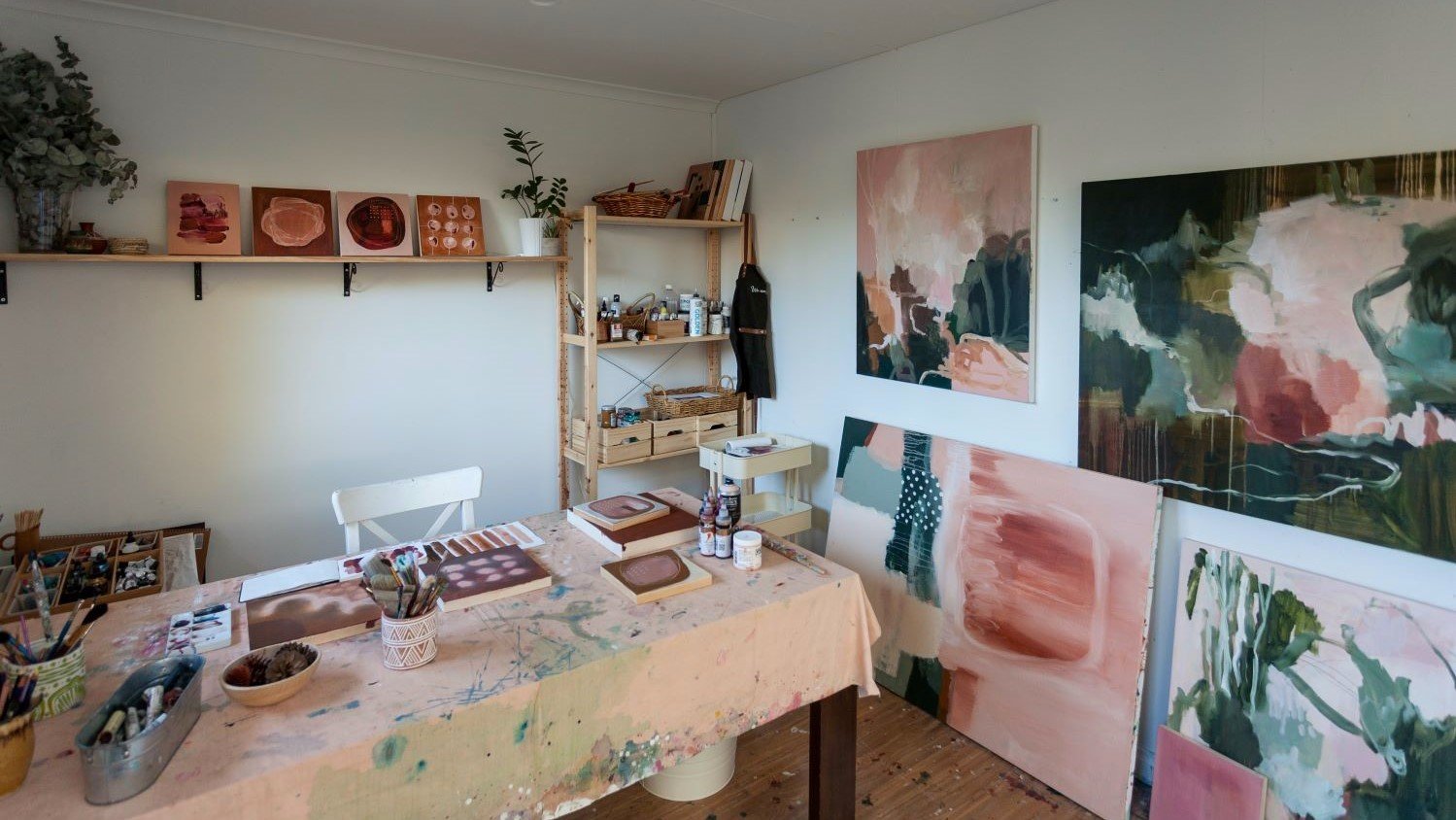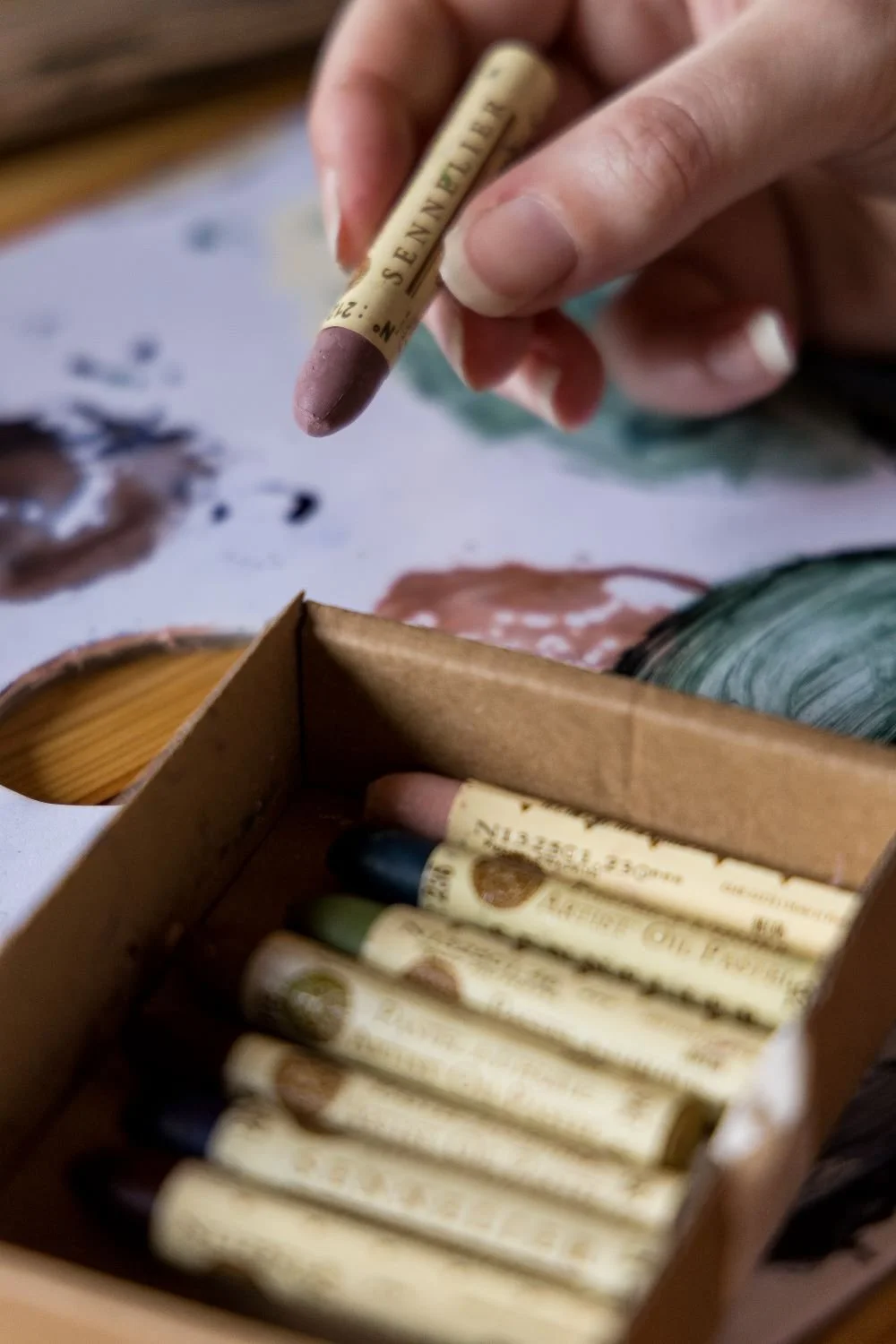Tips for Decluttering Your Art Space and Inviting in Fresh Energy
When was the last time you spruced up your creative space? Personally, I tend to declutter and re-organise my studio a few times a year. Often at the beginning of the year and then again part-way through the year when things start feeling messy and overwhelming.
There is something very therapeutic about purging old supplies, rearranging furniture, sorting through artwork, writing lists, and bringing in new inspiration. In fact, if you are in a funk and uncertain about your art direction, it is one of the best things you can do.
It’s not just about having a clean space, it’s about taking the opportunity to pause, reflect on your creative journey, and re-calibrate.
Even if you prefer working in a messy art environment, there are still benefits to reviewing your space and making changes to maximise your creativity. Whether it’s making sure your paint supply is topped up or rearranging your brushes for easy access, switching things up brings new energy to your creative practice.
Ok, so now that we’ve covered the why, how do you go about it?
10 Studio Organisation Tips
1. Block out a chunk of time to dedicate to the task.
However long you think it is going to take, double it! Clear your schedule and give your studio revamp focused attention rather than trying to fit it in around other bits and bobs.
2. Take everything out and refresh the space.
Yep, take it all out. Everything. The furniture, the art supplies, and the art. Give yourself a blank canvas to work with, and while you are at it, this is the perfect time to clean out the cobwebs and paint the walls. We used Dulux Vivid White paint on the walls to help bounce the light around and make my abstract art pop.
3. Give yourself permission to purge.
Sometimes we feel like we have to hold on to every part of our artistic journey. It can be hard to let go of things, especially artwork and art supplies, but I urge you to think about whether those items are helping or hindering your creative process. By all means, hold on to things you love, but if they don’t inspire you or get you excited about creating, maybe it’s time to part ways. Unwanted items can be sorted into categories, e.g. gifts, donations, recycling, and general waste.
4. Make it functional.
Take a moment to imagine your ideal space. Get clear about the work you want to create and how you want to create it. Once you know your priorities, you can look for specific solutions. For example, if painting big canvases is a priority, an easel or a painting wall are likely to be important. While it is tempting to want to cover all bases, when we do that, we often end up with a cramped studio space where nothing works. Consider your main purpose and make that a priority.
5. Place a value on comfort.
Lighting, heating, cooling, and a comfortable chair are all important factors that will affect your desire and ability to create. Investing in these items will pay off over time and reward you with more happy art-making hours.
6. Experiment with different lay-outs.
Measure your space and try your furniture in various configurations. For me, having a large table in the middle of the studio that faces out to my garden and has access from three sides helps my creative flow. It allows me to move freely and feels much more inviting to sit at.
7. Be creative with storage.
Before you go out and buy a tonne of containers and baskets, take a moment to think. Ask yourself, what exactly do you need to store? Then you can go out and hunt down the solution. I found most of the items I was looking for at IKEA, but I also used items that I already had in my home.
8. Consider where in-progress and finished work will be kept.
Have you thought about where your in-progress or finished pieces will live? I overlooked this area when I first set up my studio, and I ended up damaging my work and cluttering my space. Now I have a set of IKEA Alex drawers for my paper pieces and an IKEA Ivar shelf that can hold smaller canvases and wooden panels. I am also working on a strategy for limiting the number of large canvases I am allowed to work on at any time. We will see how that goes!
9. Make it a place that you want to be in.
It is one thing to have a functional space, but you also need an inviting and inspiring environment. Take time to decorate your space. Plants, candles, artwork, and other trinkets and treasures will help to make your studio feel cosy and personal. Another idea is to cut out or print images that inspire you and create a mood board or inspiration wall.
10. Look after your space.
This is probably the hardest part of all. Studios, by their very nature, get messy, and that’s a good thing, but for me, if things get too messy, it becomes overwhelming. See whether there is a way to incorporate cleaning and organising your studio into your creative practice. It could be 10 minutes at the end of each painting session, or maybe half an hour on the weekend. My favourite way to do this is to put on a podcast and potter around in my studio on a Sunday afternoon, getting ready for the week ahead.






